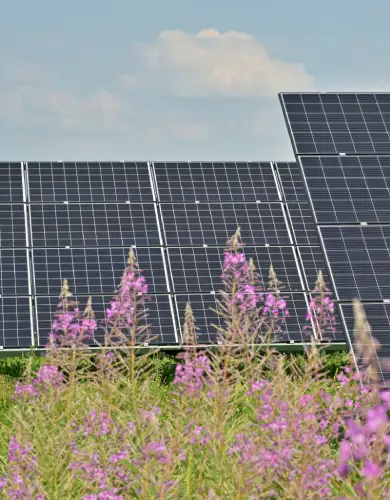New and innovative solutions for solar technology
Solar energy is the fastest-growing electricity and heat generation source in the world.
This is partly due to the supersonic development of underlying photovoltaic technologies and the creative ways it is deployed.
Below are 7 impressive solar energy innovations that showcase why solar energy may soon become the reigning source of global energy.
Contents List
- SolarisKit – Modular Thermal Collectors
- Perovskite PV Cells – Efficiency at a Lower Cost
- Solar Seawater Greenhouses – Enabling Agriculture in Arid Environments
- Space-base Solar Power – Baseload solar power
- Floating Solar Power – Added benefits to all sectors
- Solar Roof Tiles – Blending renewables with traditional landscapes
- Portable Solar Power – Cleaning portable energy generation
1. SolarisKit – Modular Thermal Collectors
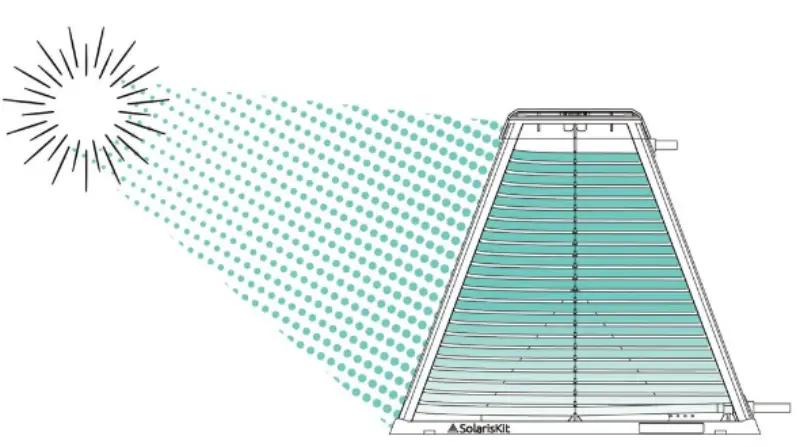
Traditional thermal solar collectors look very similar to solar panels, but instead of extracting electricity, they ‘collect’ heat from the sun to heat water.
These devices are common in notoriously sunny places like Southern Spain and Greece but are sparse in places like the UK despite receiving enough solar radiation to make it work.
This is because of (1) the misconception that they don’t work in the UK, and (2) their bulkiness, unavailability and lack of installation expertise in the UK.
In comes solar water heating, with the SolarisKit – a Scottish startup that tackles these two inherent shortcomings by overhauling the design to suit the modern, space-conscious, easy-to-install, modular approach to appliances.
You can receive your thermal collector by post and install it yourself anywhere on your property that is exposed to the sun.
You can use the SolarisKit to heat a swimming pool in an independent system or connect it to your existing hot water system to reduce the heating load on your gas boiler.
And scaling up their heating or volume capacity is only a matter of installing more or less of them in series– easy!
Extended Reading:
- Solaris Prism: A scalable solar-powered water heating unit
- Small Modular Reactors (SMRs): A nuclear renaissance?
- Flow Batteries: A modular solution to grid-scale energy storage
2. Perovskite PV Cells – Efficiency at a Lower Cost
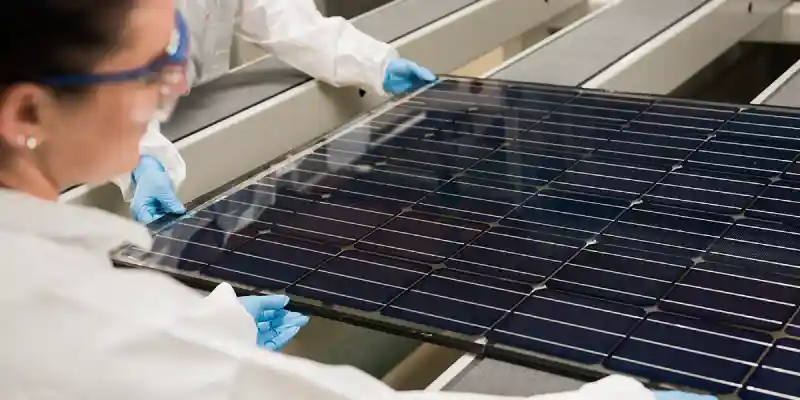
When it comes to photovoltaic cell technology –i.e. converting solar radiation into usable electricity– silicon-based cell technology has reigned supreme since it became commercially available in the 1970s.
Back then, Silicon-cell conversion efficiencies remained below the ~10% mark, polysilicon prices hovered around $50 per kg, and no industry standards like ISO to streamline manufacturing existed.
Fast-forward fifty years, and monocrystalline cells are approaching ~24% efficiency, polysilicon prices hover around $10 per kg, and ISO standards have streamlined production to support the TWh of solar capacity currently installed worldwide.
Yet, another technology is emerging on the horizon that promises to continue this relentless acceleration: Perovskite PV cells.
Perovskite cells can be made a hundred times thinner, so they can be made into flexible and transparent panels, opening up many new applications like transparent solar glass and photovoltaic material covers, to name a few.
Extended Reading:
3. Solar Seawater Greenhouses – Enabling Agriculture in Arid Environments
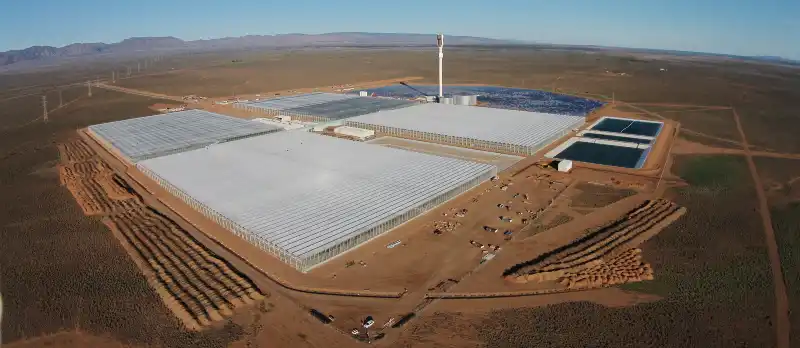
Climate change is already affecting agricultural production worldwide. For instance, East Africa is experiencing its worst drought in 40 years, while food prices in Peru have skyrocketed due to extreme temperatures resulting from this year’s El Niño phenomenon.
These extreme events are predicted to intensify over the coming decades, endangering much of global food production, especially in arid regions with limited water resources.
Enter a remarkable solar-powered innovation: solar-powered seawater greenhouses, which use a combo of solar thermal and solar PV to desalinate water for greenhouse agriculture.
Australia is already sourcing 15% of its tomatoes from such as facility, demonstrating its viability on a commercial scale while saving precious freshwater resources for other uses like human consumption.
This is low-carbon food security in the making.
Extended Reading:
4. Space-base Solar Power – Baseload solar power

This futuristic proposition is being earnestly explored given the recent (1) improvements to photovoltaic systems and (2) satellite technology driven by companies like Starlink and OneWeb.
Space-based solar power aims to overcome some of the drawbacks of terrestrial solar photovoltaic power, namely that electricity generation is limited to daylight hours, leaving other types of generators (or energy storage) to do the job at night.
Space-based solar energy aims to turn intermittent solar power into a baseload generator without the need for energy storage by outsourcing the photovoltaic conversion into space-based panels that operate around the clock and generate electricity with unfiltered sunlight.
The generated power is transferred to Earth via concentrated microwave beams and converted to electricity directly fed into the national grid.
The idea may seem impractical, but when you look at it from the perspective of enhancing energy security, it may be the only power source impervious to terrestrial warfare or natural hazards.
But as long as costs remain higher than those of solar PV + PV Solar battery systems, we’re unlikely to see this as a cost-effective alternative. One for the 2050s, perhaps!
Extended Reading:
5. Floating Solar Power – Added benefits to all sectors
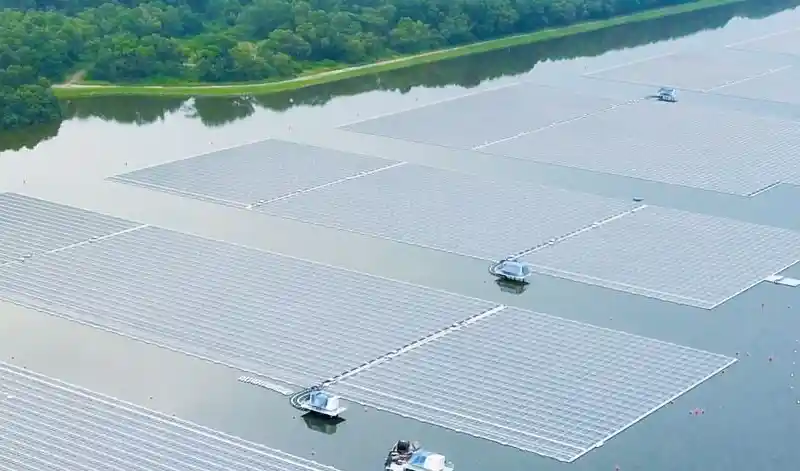
Several problems with current electricity generation have so far not been given an elegant solution:
(1) Most electricity used in sprawling urban areas suffers from transmission losses as it is generated far away, and
(2) Solar PV cells lose efficiency when they get too hot– ironic given that they also benefit from sun exposure.
Installing floating solar panels on urban reservoirs elegantly addresses both of these challenges. It’s an intelligent way of using this untapped real estate, and the underlying water has the capacity to keep the panels cool and efficient throughout the year.
Such installations can feed power directly into a local electricity distribution network, providing reservoir owners (often water utility companies) with an alternative revenue stream or, even better, an opportunity to decarbonise energy-intensive public water infrastructure such as water treatment, desalination and pumping.
Floating solar panels can also be installed in existing hydroelectric or PSH reservoirs, boosting the re-charging capacities of these energy storage systems as a cost-effective add-on, potentially saving billions of dollars.
Finally, they also have the added benefit of keeping small lakes, lagoons, and ponds cool and free of algal blooms, which are issues worsening due to climate change and straining lacustrine ecosystems.
Extended Reading:
- Is floating solar energy truly revolutionary?
- Can Scotland become a mega-battery for the whole of Europe?
6. Solar Roof Tiles – Blending renewables with traditional landscapes.

The widespread installation of wind and solar farms across the territory is triggering a visceral aversion to change, particularly among the most conservative-leaning sectors of the population.
The ongoing moratorium on onshore wind power in the UK is a testament to this primal reaction, with many haters insisting that it “spoils” the idyllic British countryside, overlooking the broader benefits of renewable energy.
Even inconspicuous solar panels have fallen prey to anti-renewable opinions, which is why commercial solar roof tiles that can discreetly generate clean power have found a market. It’s now a viable alternative to traditional commercial solar panels.
They may be more expensive and less efficient than regular solar panels, but the premium pays off on the psychological and aesthetic side of the product, with many companies in the UK manufacturing and installing them.
And with Perovskite technology rapidly coming onto the scene, this may be the tip of the iceberg when integrating renewables with existing architecture.
Extended Reading:
7. Portable Solar Power – Cleaning portable energy generation
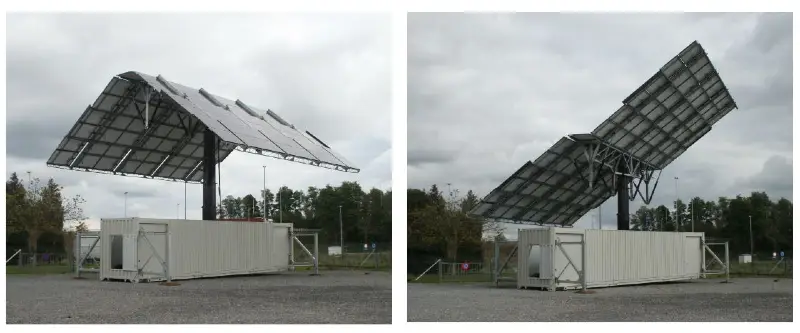
One niche largely untouched by renewables is that of reliable portable generators.
Festivals, circuses, drilling rigs, and construction sites are off-grid businesses that rely on diesel generators
It’s hard to blame them when no alternatives match the cost-effectiveness and convenience of diesel generators. After all, the fuel is energy-dense, readily available, and imperishable, and it generates power at a relatively cheap business electricity rate.
Yet, several start-ups are using containerised solar technologies to challenge the dominance of traditional power generators, with the falling cost of commercial solar power and solar batteries making this look increasingly feasible.
Various designs have emerged, cleverly packing self-deploying stacks of photovoltaic systems into a shipping container that can be transported by land or sea to its destination.
The synergy of panels and batteries ensures that these can operate dependably like traditional generators.
Extended Reading:
